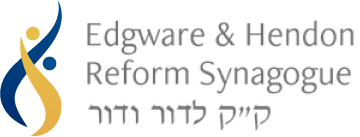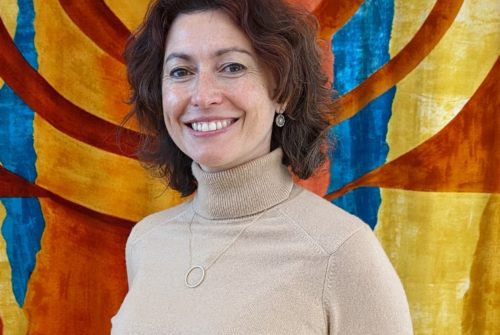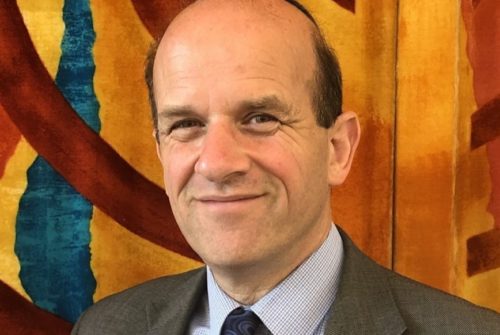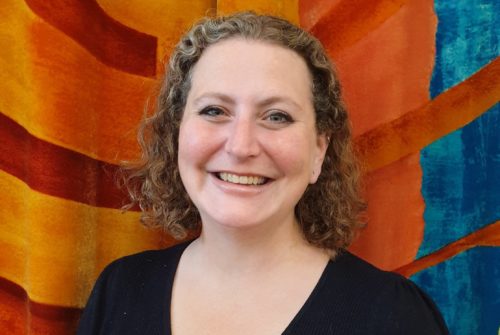Some members of the congregation know that I spend most of my teenage years in Los Angeles. My family moved there in 1976 soon after the three-day week and not long before the ‘winter of discontent’. Essentially my parents had had it with the UK and felt that bringing us four children up in the USA was a gift that they could give to us when my father was offered a good job there. Southern California was indeed a bit of a contrast to mid-1970’s London!
That was so in many ways – but one was in the strength of Reform Jewish life that we encountered there. When we left the UK, we were deeply involved in Northwood and Pinner and Wembley Liberal Synagogues – and enjoyed Jewish life here. But in Los Angeles the scale and ambition of Jewish life was something else. After trying a couple of other Synagogues, we settled as members of Stephen S Wise Synagogue, high in the Santa Monica mountains, perfectly positioned between the main Los Angeles basin and the San Fernando valley. I really enjoyed being there, learning in their streamed Cheder, which meant that my deep interest in Judaism was not odd, going to their woodlands retreat centre, enjoying spirited Friday night services and much more. While I was there I celebrated my Kabbalat Torah – this was a ceremony at age 16 still part of UK Liberal Jewish life, where a class of us led a service for the community sharing our learning of the past two years. At some point during the process, and I don’t remember it, we must have had photos taken. And then in 1979 we returned to the U.K. as a family and continued to be part of Jewish life here.
Pretty much forty years later as a Rabbi having served Progressive Judaism for over twenty years I returned to Stephen S Wise Temple as part of my Sabbatical study tour of the USA to learn from eighteen congregations and Jewish organisations discovering good practice in all kinds of ways to bring back to the UK for us and other British Reform Synagogues to consider adapting to our needs.
I went to meet with Rabbi David Woznica at Stephen S Wise Temple. Before I went to the Synagogue I had written to Rabbi Woznica that I had once been a member of the congregation. We talked for a couple of hours about the work of the congregation and then David said – I must show you something. He took me into the corridor between the Synagogue’s large and small Batei Tefillah, like us they run parallel services most Shabbatot. There was a series of photos on the wall – each with every year’s Kabbalat Torah Group – going back to the Synagogue’s foundation in 1964. A fifth of the way along, there was my group and – there was I. More hair, less tummy. I was still present in my old Synagogue – not because I had given anything, or led anything but just because I had been part of a class. In some small way I mattered at Stephen S Wise.
That for me was one of the major shared impressions that I learned in the ten USA congregations that I visited. Every one of them is trying to find a way to make sure that it really matters that you – the individual member – show up – and then when you do, especially if you are in need, your presence matters to everyone else.
This week our Torah portion Tetzaveh is decidedly strange – it is in the five books of Moses – but the name of Moses is not mentioned once. Today is the 11th Adar, four days after our Rabbis decided we should mark Moses’ Yarzheit each year, working on the Midrashic idea the Moses’ absence was to signal to us that this is the week Moses died (Kiddushin 38a). It is the week in which of course we always read this Moses free portion of Teztzaveh. Instead of the great Moses, who gave so much of himself in leadership, this portion tells us about the importance of every individual Jew in the Jewish community.
It does that through the symbolism of the Ephod – the shoulder suspended apron which the High Priest wore in order to bring the Jewish people symbolically into the presence of God whenever he entered the Holy of Holies. The shoulder piece had the inscribed names of the each of the 12 tribes of Israel, each on their own lapis lazuli stone to represent their individuality. Centuries later in the Book of Samuel, King David called for the Ephod to be brought to him before he could make a decision to go out to war – no decision could be made without the people symbolically with him.
Here are a few ways of recognizing and valuing every member of the Synagogue that I saw: Many of the Synagogues went to the trouble of creating name badges for every member of the Synagogue (even shuls with thousands of members – or maybe especially shuls with thousands of members) so that when you come to Synagogue you can choose to pick yours up and be known. I was asked in several shuls whether I would be happy as a visitor to have a badge written with my name – and I was.
Most of the Synagogues had a custom of pausing early in the service for people to introduce themselves to the people sitting around them. Few felt it OK to leave being greeted by your fellow members to the final Shabbat Shalom or never at all.
The prayers for the sick were also an opportunity in several Synagogues for the personal. A few times I saw the prayer said inviting those who were thinking of someone who they cared about to stand. They were asked to say the name of the person they were thinking about – and in one Synagogue while the Misheberach song was played the Rabbis, wardens and musicians who were part of the service came out to the people in the congregation so that they could say a little to someone about the person they were thinking about. They mattered and the pain that they were sharing mattered.
At Kaddish at pretty much every Synagogue the congregation was invited to sit at the end of the Aleynu, then those who had lost someone recently were asked to stand and then those who were commemorating Yarzheit were– before the whole congregation stood with them. It meant that you know who in your row was commemorating someone special and you could say a few kind words to them.
In one Synagogue, also in Los Angeles, called Ikar, whose name in Hebrew means essence, they take this even further and for Yizkor on Yom Kippur they ask at the beginning of the preceding month for anyone who would like a name read out to provide a few lines about their loved one to the shul. These loving paragraphs then get incorporated into a soft cover book. Hundreds of copies of this book are available throughout Yom Kippur for all to know who the people behind the names actually were.
As always practices that we see in other Synagogues don’t work raw in one’s own. What they are pointing to needs consideration as exactly how to put great ideas and values into practice has to be adapted locally. In all of these Synagogues it was clear that to be a communal leader was to bear the names of everyone in the congregation upon your shoulders. It has to matter that the individual has, as they put it in America, shown up. It also really helps that the individual Jew learns to be proud that they are there at Synagogue. Our concept of minyan says that your presence matters. If you are number ten and you are not there then the service is just not the same, a community service cannot happen. Among my learnings is that even a congregation blessed with hundreds of people at worship, you can make sure that each person showing up matters to the congregation and to the congregant or visitor.
Let your name be on the Ephod and let your congregation welcome every person. That was message number one from my trip! In this week when we heard about the 2255 anti Semitic incidents recorded by the CST in 2021 we have to work doubly hard as communities to welcome Jew and those who visit us in our Synagogue, person by appreciated person. We have to be the greatest philo-semites to cancel out the nastiness out there.



